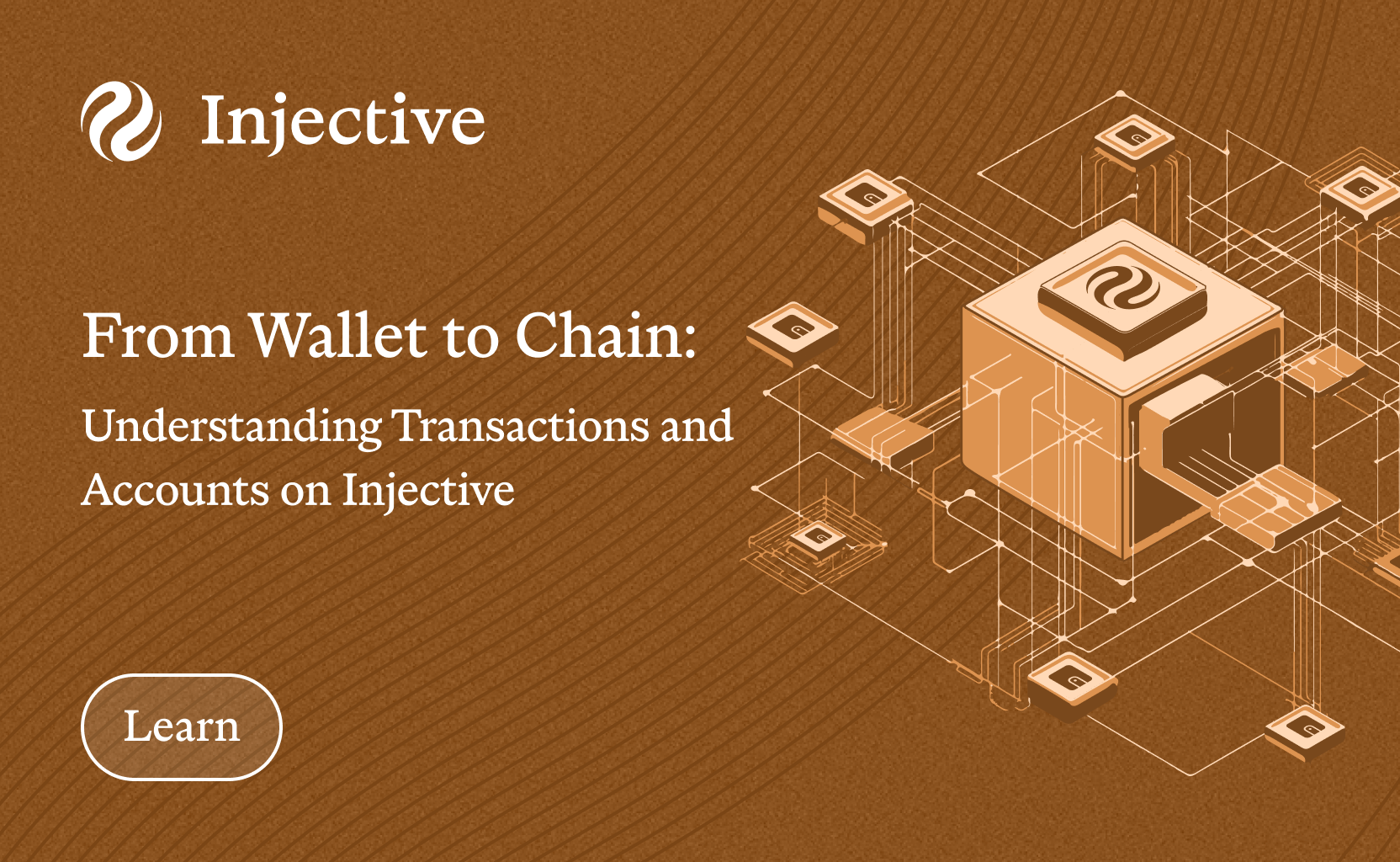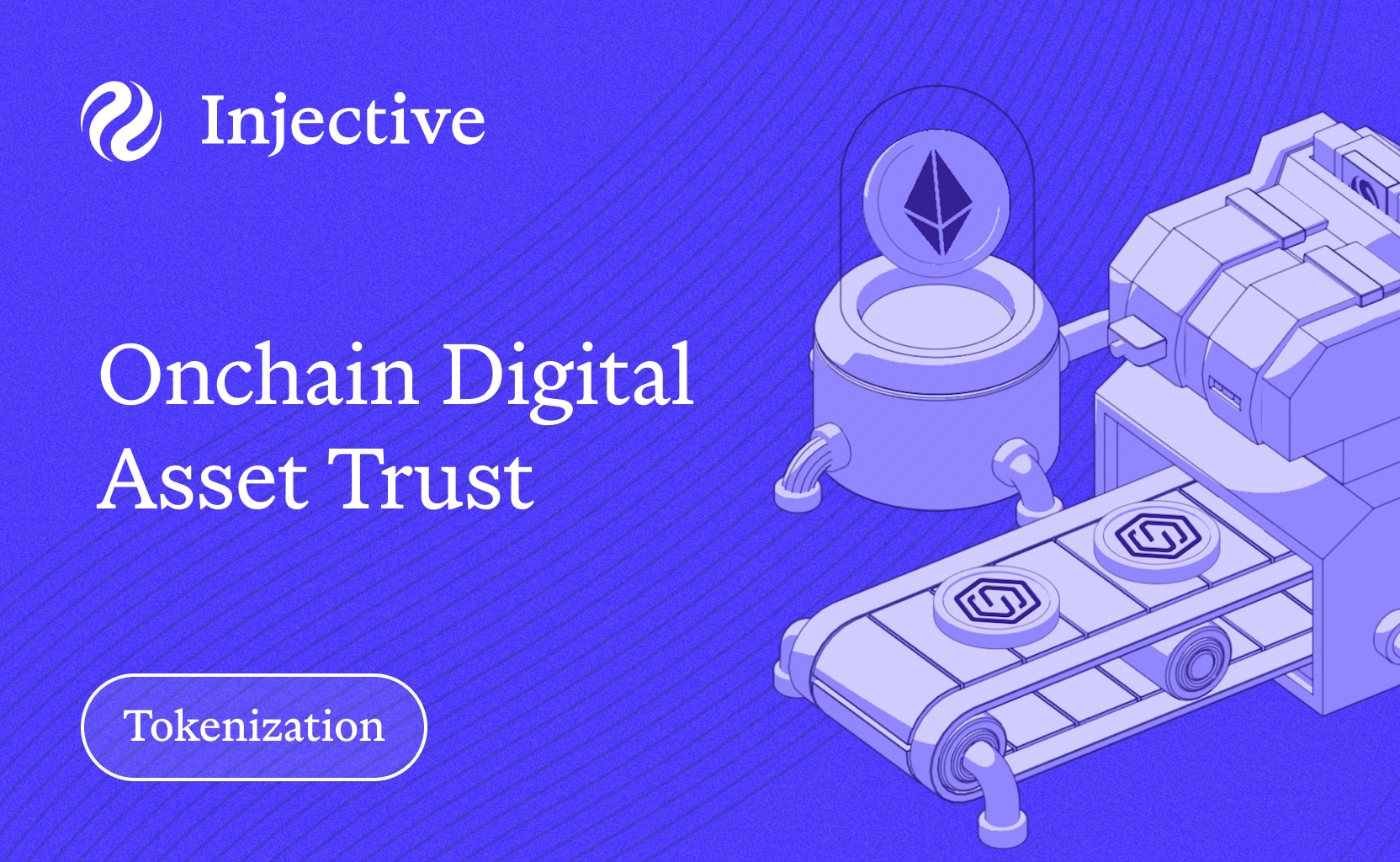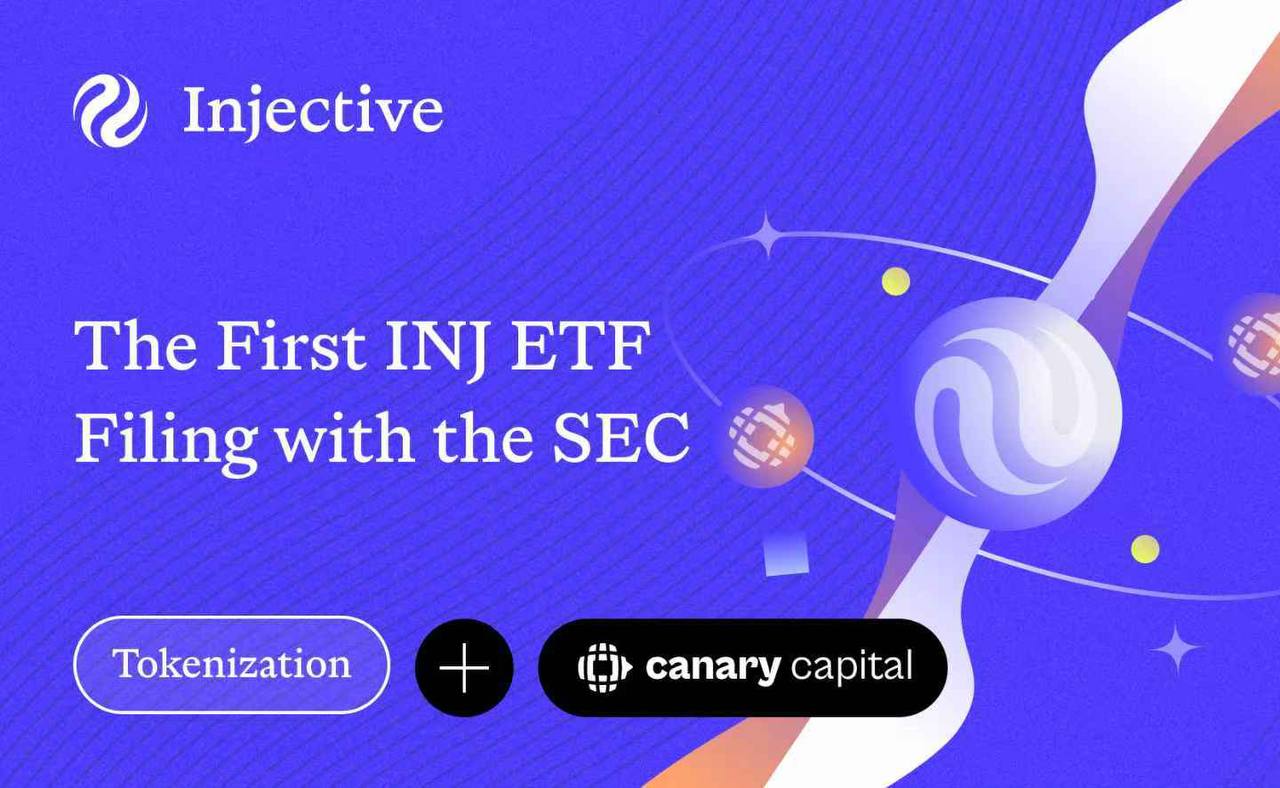Overview
In a blockchain, an account represents a unique entity (like a user or smart contract) identified by an address, which holds a balance of tokens or assets and is secured by cryptographic keys. Transactions are digitally signed instructions initiated by accounts to transfer assets, update the blockchain's state, or execute smart contract functions. Together, accounts and transactions form the backbone of blockchain operations: accounts maintain ownership and state, while transactions drive the network's activity, ensuring secure, transparent, and immutable record-keeping as they are validated and added to the distributed ledger.
The Injective Network, a Layer-1 blockchain built for next-gen finance. Designed to deliver high-speed, scalable, and interoperable solutions, Injective stands out with its ability to process transactions efficiently while maintaining a decentralized ethos. In this deep tech dive, we’ll explore the intricacies of transactions and accounts on the Injective Network.
Transactions on the Injective Network
Transactions are the lifeblood of any blockchain, and Injective’s design prioritizes efficiency, security, and flexibility. Here’s how they work under the hood.
Transaction Flow: From Preparation to Finality
Every transaction on Injective follows a structured three-step process: preparation, signing, and broadcasting. This flow ensures that transactions are secure, verifiable, and seamlessly integrated into the blockchain.
1. Preparation
A transaction begins with defining its purpose, such as transferring INJ tokens, staking, or interacting with a smart contract. Developers or users craft a message (e.g., `MsgSend` for token transfers) using Injective’s SDK tools. This message includes critical details like the sender’s address, recipient’s address, and amount. The transaction is then enriched with metadata, such as the account sequence number, chain ID (e.g., `injective-1` for mainnet), and a timeout height to prevent indefinite delays. For Ethereum-native wallets like MetaMask, the transaction is converted into EIP-712 typed data, Injective supports this standard to ensure compatibility with Ethereum’s signing mechanisms.
2. Signing
Once prepared, the transaction must be cryptographically signed to prove authenticity and authorization. Injective supports multiple signing methods, including Amino (Cosmos-native) and EIP-712 for Ethereum wallets. The signer—typically the account holder—uses their private key to generate a signature. This signature is appended to the transaction, ensuring it cannot be tampered with. For example, a user sending 0.01 INJ would sign the EIP-712 typed data via MetaMask, linking their Injective address (e.g., `inj1...`) to their Ethereum address.
3. Broadcasting
The signed transaction is then broadcast to the Injective network via a REST API endpoint (e.g., `https://sentry.tm.injective.network:443`). Validators, who secure the network through staking INJ, process the transaction using the Tendermint consensus protocol. Tendermint’s Byzantine Fault Tolerance (https://blog.injective.com/understanding-injective-architecture-and-consensus/) ensures that the transaction is agreed upon by a majority of validators and included in a block. With block times averaging 0.71s, transactions achieve near-instant finality—meaning once confirmed, they’re set in stone.
Transactions to Modules
On Injective, a transaction is a signed data structure that contains one or more messages, along with metadata like fees, gas limits, and signatures. Messages are module-specific instructions that define the action to be performed (e.g., sending tokens, placing an order, staking).
One good example of this is when interacting with different modules by `injectived`
# send a transaction to exchange module to place a spot limit order.
injectived tx exchange create-spot-limit-order ...
#send a transaction to wasm module to execute smart contract logic.
injectived tx wasm execute ...Zero Gas Fee
One of Injective’s standout features is its approach to gas fees. Unlike other blockchains, where users pay gas for every transaction, Injective eliminates network gas fees for end-users on its DEX applications like Helix. This is made possible by Injective’s API nodes, which handle transaction relaying and data indexing without charging gas. For developers or users interacting directly with the chain (e.g., staking or governance), an average $0.0003 transaction fee applies, payable in INJ, this is negligible compared to Ethereum’s costs.
MEV Resistance
Injective tackles Miner-Extractable Value (MEV), a common issue in order-book-based DEXs. MEV occurs when miners or validators reorder transactions for profit, such as front-running large trades. Here are solutions from Injective:
1. Frequent Batch Auction (FBA): Unlike traditional order book exchanges that match trades continuously, FBA groups transactions into fixed time intervals and matches them all at once at the end. This removes the time advantage that front-runners typically exploit.
2. Sealed bids: Transactions remain hidden until the auction ends, preventing participants from seeing others’ orders in advance or adjusting their strategies. This privacy removes the information advantage that MEV actors rely on. Think of it like a queue where no one can see what others are ordering until it’s too late to change their own.
By mitigating MEV, Injective ensures a level playing field for traders.
Interoperability in Action
Transactions on Injective aren’t limited to its native chain. The network’s bridges—such as the Peggy bridge for Ethereum and Wormhole for broader IBC ecosystems—enable cross-chain asset transfers. For instance, an ERC-20 token can be locked in a smart contract on Ethereum, relayed via a Peggy bridge, and minted as a native asset on Injective. This process, while complex, is abstracted for users through the Injective Hub, making cross-chain transactions as simple as a few clicks.
Accounts on the Injective Network
Accounts are the entities that initiate and receive transactions on Injective. They’re more than just addresses—they’re the backbone of user interaction with the network.
Account Structure
Injective accounts are derived from a public-private key pair, following the Cosmos ecosystem’s Bech32 address format (prefixed with `inj`). For example, an address might look like `inj1hkhdaj2a2clmq5jq6mspsggcdwcdaz5yxq5gkn`. Each account has:
- Public Key: Used to verify signatures.
- Private Key: Kept secret, used for signing transactions.
- Account Number: A unique identifier assigned upon account creation.
- Sequence Number: A counter that increments with each transaction to prevent replay attacks.
Accounts are linked to Ethereum addresses via a deterministic mapping, allowing users to use the same key pair across both ecosystems. For instance, an Ethereum address (`0x...`) can be converted to an Injective address (`inj1...`) using tools from the Injective SDK. Example can be found at:
To derive Bech32 address from private key/mnemonic phrase:
import { Wallet } from 'ethers'
import { Address as EthereumUtilsAddress } from 'ethereumjs-util'
const mnemonic = "indoor dish desk flag debris potato excuse depart ticket judge file exit"
const privateKey = "afdfd9c3d2095ef696594f6cedcae59e72dcd697e2a7521b1578140422a4f890"
const defaultDerivationPath = "m/44'/60'/0'/0/0"
const defaultBech32Prefix = 'inj'
const isPrivateKey: boolean = true /* just for the example */
const wallet = isPrivateKey ? Wallet.fromMnemonic(mnemonic, defaultDerivationPath) : new Wallet(privateKey)
const ethereumAddress = wallet.address
const addressBuffer = EthereumUtilsAddress.fromString(ethereumAddress.toString()).toBuffer()
const injectiveAddress = bech32.encode(defaultBech32Prefix, bech32.toWords(addressBuffer))You can learn more on Injective documentation: https://docs.injective.network/getting-started/wallet/accounts
Account Types and Management
There are 3 main types of Addresses/PubKeys available by default on Injective:
- Addresses and Keys for accounts that identify users (i.e., the sender of a message). They are derived using the eth_secp256k1 curve.
- Addresses and Keys for validator operators, which identify the operators of validators. They are derived using the eth_secp256k1 curve.
- Addresses and Keys for consensus nodes, which identify the validator nodes participating in consensus. They are derived using the ed25519 curve.
Users manage accounts through wallets like MetaMask, Keplr, or Ledger, which integrate with the Injective Hub—a one-stop portal for staking, governance, and bridging. The Hub simplifies tasks like delegating INJ to validators or voting on governance proposals, all tied to the account’s INJ balance. `injectived` CLI can also help to manage accounts, for more details you can refer to this page: https://docs.injective.network/toolkits/injectived
Staking and Governance
Accounts staking INJ can participate in network security and governance. Staking involves locking INJ with a validator to earn rewards. The staked amount contributes to the account’s voting power, allowing holders to influence protocol upgrades, market listings, and fee structures. For example, a proposal to list a new trading pair on Helix requires a quorum of votes from INJ-staked accounts.
Security and Privacy
Injective prioritizes account security with advanced cryptography. Private keys never leave the user’s control, and transactions are signed locally before broadcasting. The network’s PoS consensus, combined with Tendermint’s BFT, ensures that accounts are protected from double-spending or unauthorized access, provided users safeguard their keys.
Conclusion
Understanding the structure and function of accounts and transactions is fundamental to know how the Injective Network powers decentralized finance. With its purpose-built architecture, Injective not only ensures secure and transparent interactions through cryptographic account management and transaction validation, but also achieves high performance and interoperability that sets it apart from other Layer-1 chains.
About Injective
Injective is a lightning fast interoperable layer one blockchain optimized for building premier Web3 finance applications. Injective provides developers with powerful plug-and-play modules for creating unmatched dApps. INJ is the native asset that powers Injective and its rapidly growing ecosystem. Injective is incubated by Binance and is backed by prominent investors such as Jump Crypto, Pantera and Mark Cuban.
Website | Telegram | Discord | Blog | Twitter | Youtube | Facebook | LinkedIn | Reddit | Instagram | Orbit Newsletter



